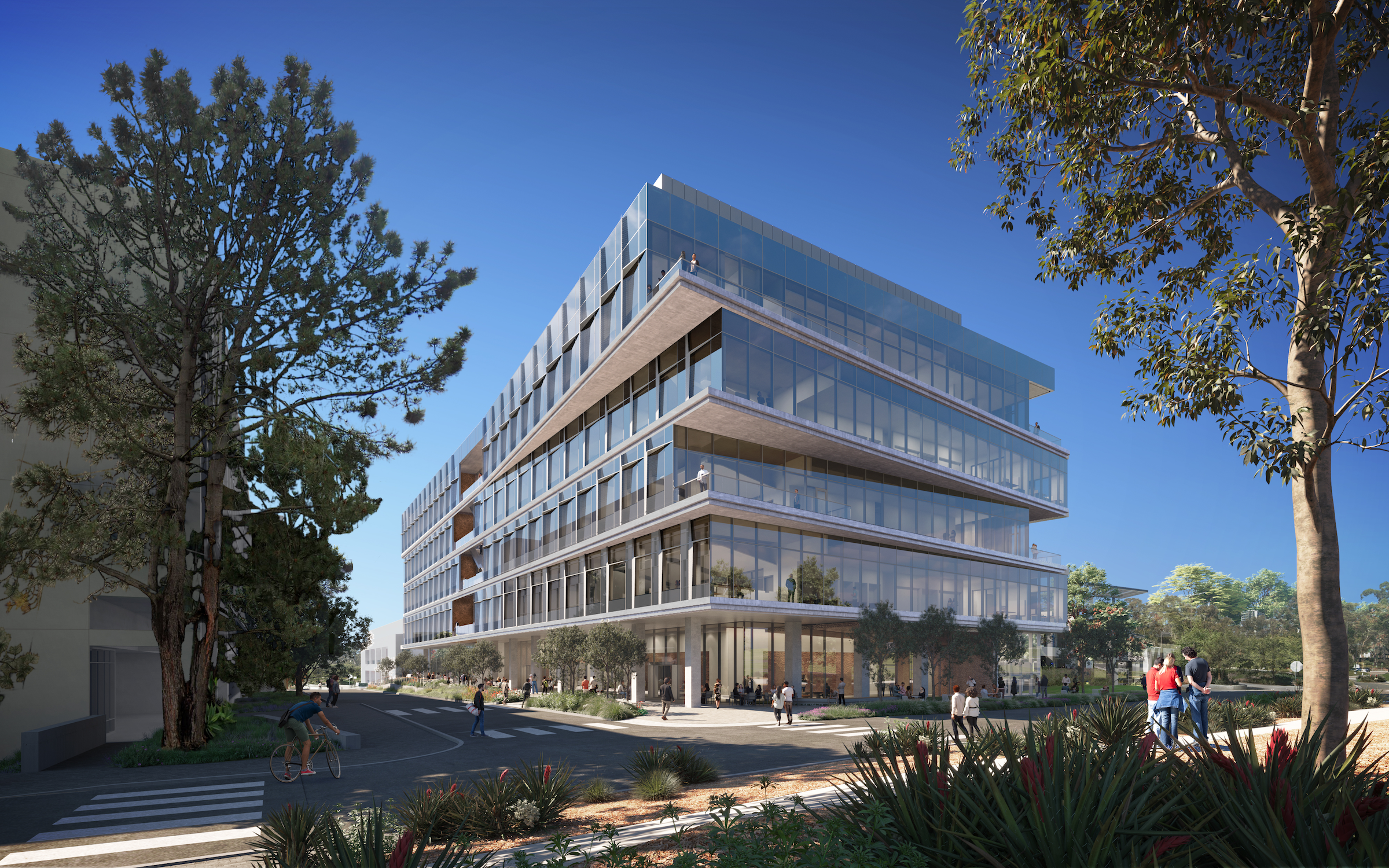The University of California San Diego has approved plans for a new Multidisciplinary Life Sciences Building, with construction starting this fall. The 200,000-sf, six-level facility will be the first building on the UC San Diego campus to bridge health science research with biological science research and teaching.
The facility aims to help meet a growing demand for modern teaching and research space across disciplines at UC San Diego Health Sciences and the School of Biological Sciences. Research and teaching will focus on the intersection of neurodegenerative disease, inflammation, immunology, and infectious disease—using advanced technologies to drive discovery in academia and industry.
The design by Flad Architects creates scientific neighborhoods that support interdisciplinary collaboration and education at the interface of biology, machine learning, and advanced instrumentation. The research laboratories enable flexibility in response to changing programs and research, while the teaching laboratories integrate experimentation, instrumentation, and computational analysis.

The building program also includes shared research facilities, collaborative meeting areas, conference rooms, offices, and public spaces.
In the glass façade, perforated concrete fins serve both as a shading device and as a light shelf reflecting natural light into the building. The massing also creates outdoor terraces on each floor. The building’s upper floors are offset, creating the appearance of rotated stacks. The street level, with biological science classrooms and shared meeting rooms, will put science on display.
“The Multidisciplinary Life Sciences Building will help solidify UC San Diego’s standing as a premier research institution in the field of neurobiology,” John M. Carethers, MD, vice chancellor for health sciences at UC San Diego, said in a press statement.
The project is designed to meet LEED Gold certification at a minimum. Construction on the site, currently a parking lot and service road, is expected to start in fall 2024 and conclude in 2027.
On the Building Team:
Design architect and architect of record: Flad Architects
MEP engineer: Salas O’Brien
Structural engineer: KPFF Consulting Engineers
Construction manager: McCarthy
Related Stories
| Jan 9, 2014
16 recommendations on security technology to take to your K-12 clients
From facial recognition cameras to IP-based door hardware, here are key technology-related considerations you should discuss with your school district clients.
| Jan 9, 2014
Special report: Can design prevent another Sandy Hook?
Our experts say no, but it could save lives. In this report, they offer recommendations on security design you can bring to your K-12 clients to prevent, or at least mitigate, a Sandy Hook on their turf.
Smart Buildings | Jan 7, 2014
9 mega redevelopments poised to transform the urban landscape
Slowed by the recession—and often by protracted negotiations—some big redevelopment plans are now moving ahead. Here’s a sampling of nine major mixed-use projects throughout the country.
| Dec 27, 2013
$1 billion 'city within a city' development approved by Coachella, Calif., city council
The mega development includes 7,800 homes, a retail center, office space, and nearly 350 acres of open space.
| Dec 17, 2013
Nation's largest net-zero K-12 school among winners of 2013 Best of Green Schools award
The Lady Bird Johnson Middle School in Irving, Texas, was named a winner of USGBC's annual award, along with nine other schools, individuals and communities working toward the common goal of healthy, high-performing learning places.
| Dec 16, 2013
Irving, Texas building state’s second net-zero school
Lee Elementary School, scheduled to open in fall 2014, will be net-zero-ready, and if the school board decides to sell district bonds and allow the purchase of additional solar panels, will be a true net-zero facility.
| Dec 13, 2013
Safe and sound: 10 solutions for fire and life safety
From a dual fire-CO detector to an aspiration-sensing fire alarm, BD+C editors present a roundup of new fire and life safety products and technologies.
| Dec 10, 2013
16 great solutions for architects, engineers, and contractors
From a crowd-funded smart shovel to a why-didn’t-someone-do-this-sooner scheme for managing traffic in public restrooms, these ideas are noteworthy for creative problem-solving. Here are some of the most intriguing innovations the BD+C community has brought to our attention this year.
| Dec 9, 2013
Tips for designing higher education's newest building type: the learning commons
In this era of scaled-down budgets, maximized efficiencies, new learning methods and social media’s domination of face time, college and university campuses are gravitating toward a new space type: the learning commons.
| Dec 5, 2013
Exclusive BD+C survey shows reaction to Sandy Hook tragedy
More than 60% of AEC professionals surveyed by BD+C said their firms experienced heightened interest in security measures from school districts they worked with.

















